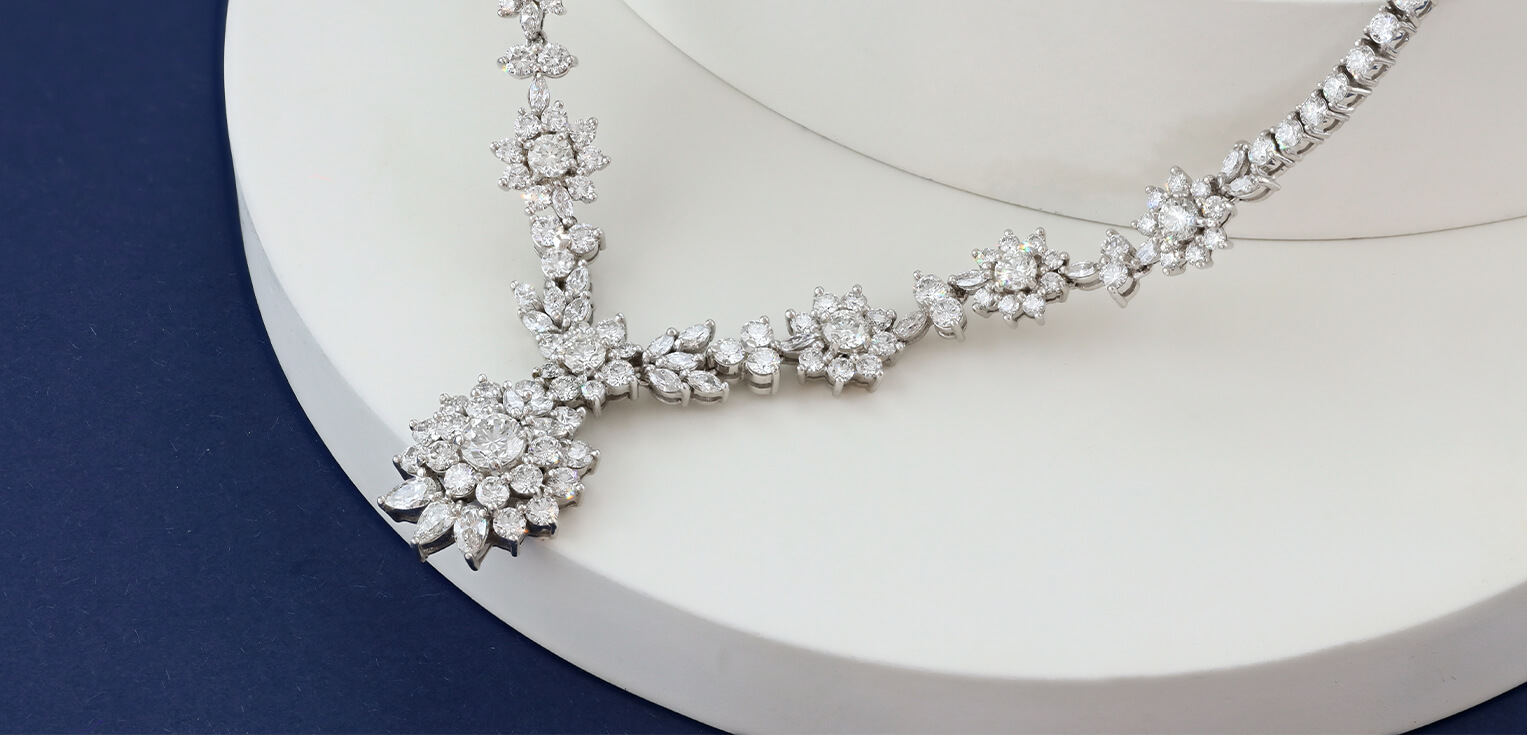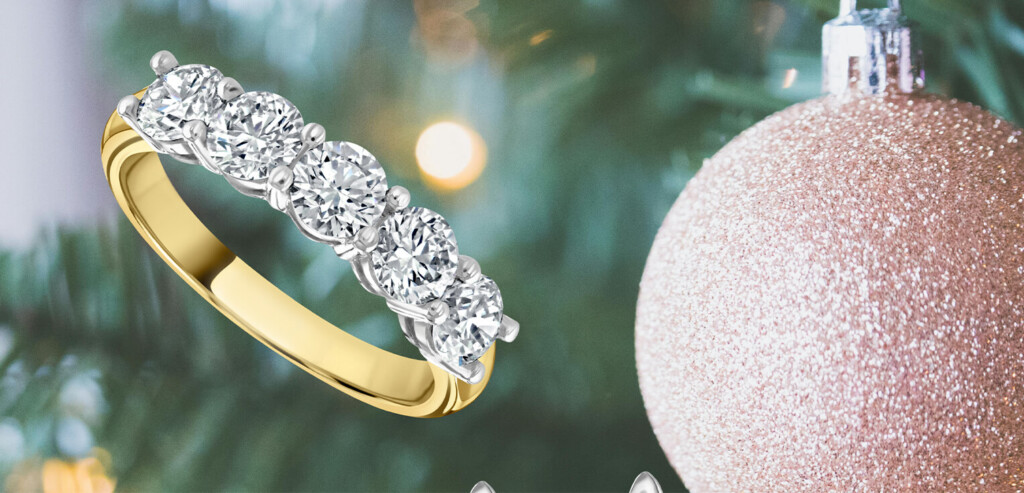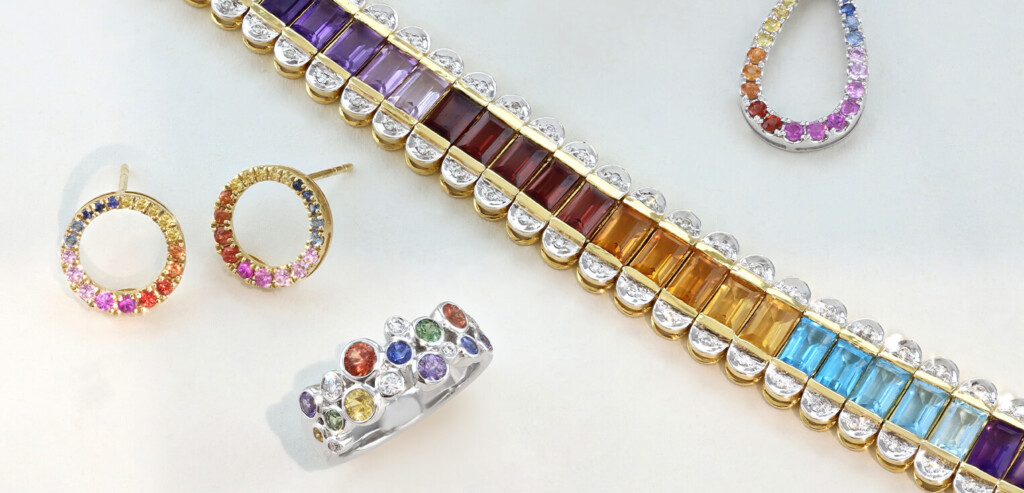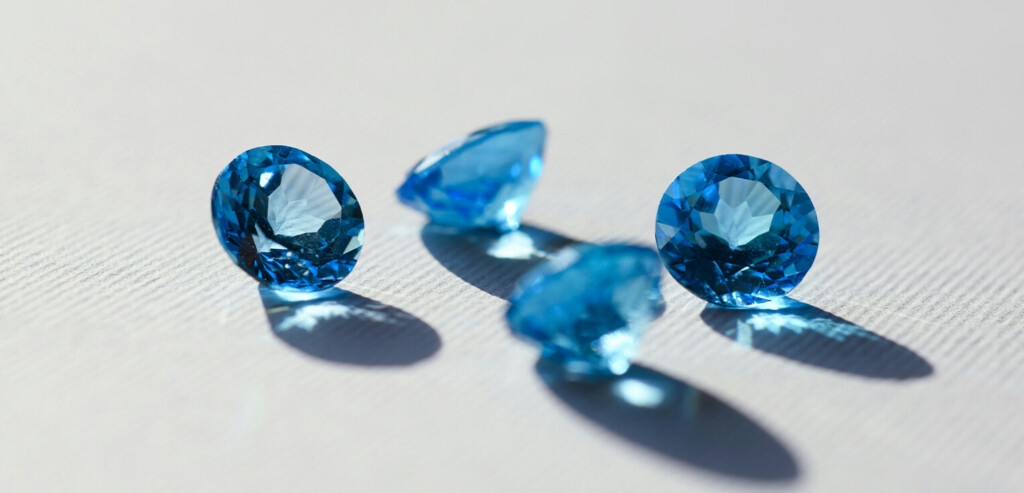When it comes to choosing pre-loved jewellery, often antique and vintage jewellery are the preferred choice for people wanting unique, well-made pieces that hold meaning and value.
Investing in antique or vintage jewellery is a great way to build your jewellery collection, prioritising craftsmanship and precious materials as well as personal style and heritage.
It can be confusing to identify what makes jewellery antique versus what qualifies as vintage jewellery. From hallmarks to period specific techniques, here is our guide to help you identify and choose your next antique or vintage jewellery purchase.
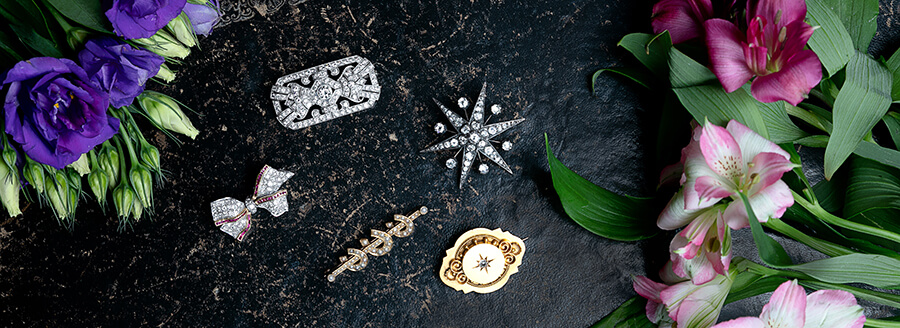
What is antique jewellery?
The main difference between antique and vintage jewellery is their age.
In the jewellery industry, antique jewellery is generally classed as pieces that are over 100 years old.
This means jewellery made before the 1920s are antique, and include pieces made in the Georgian, Victorian and Edwardian periods, as well as earlier pieces, if they have survived!
Antique jewellery can be difficult to source, making them incredibly rare and valuable, often resulting in being very expensive. This does, however, mean that you are likely to be wearing a one-of-a-kind, incredibly unique piece of jewellery, making them deserving of the higher price tag.
What is vintage jewellery?
Unlike antique jewellery, vintage jewellery has less rigid rules when it comes to classification. However, there are some guidelines that most jewellers and valuers adhere to.
Vintage jewellery must be less than 100 years old, and most commonly it is between 50 and 100 years old. This means that jewellery made between 1920 and 1970 is considered to be vintage. Although, often jewellery made more than 20 years ago is considered to be vintage, too.
As the time span that covers vintage jewellery is quite broad, so too is the price range. Earlier vintage jewellery, from the 1930s – 1950s can hold more value compared to ‘newer’ vintage pieces, however this can be dependent on condition, quality of materials and design.
What is vintage-style jewellery?
Lots of contemporary jewellery is made and described as ‘vintage inspired’ or ‘vintage style’. This means that it has been made with modern materials and techniques, but takes inspiration from the design of vintage jewellery.
While vintage-style jewellery is a more affordable option, good for costume jewellery pieces for special occasions, genuine vintage jewellery holds a lot more value and is often more hardwearing, due to the time and techniques used to produce them.
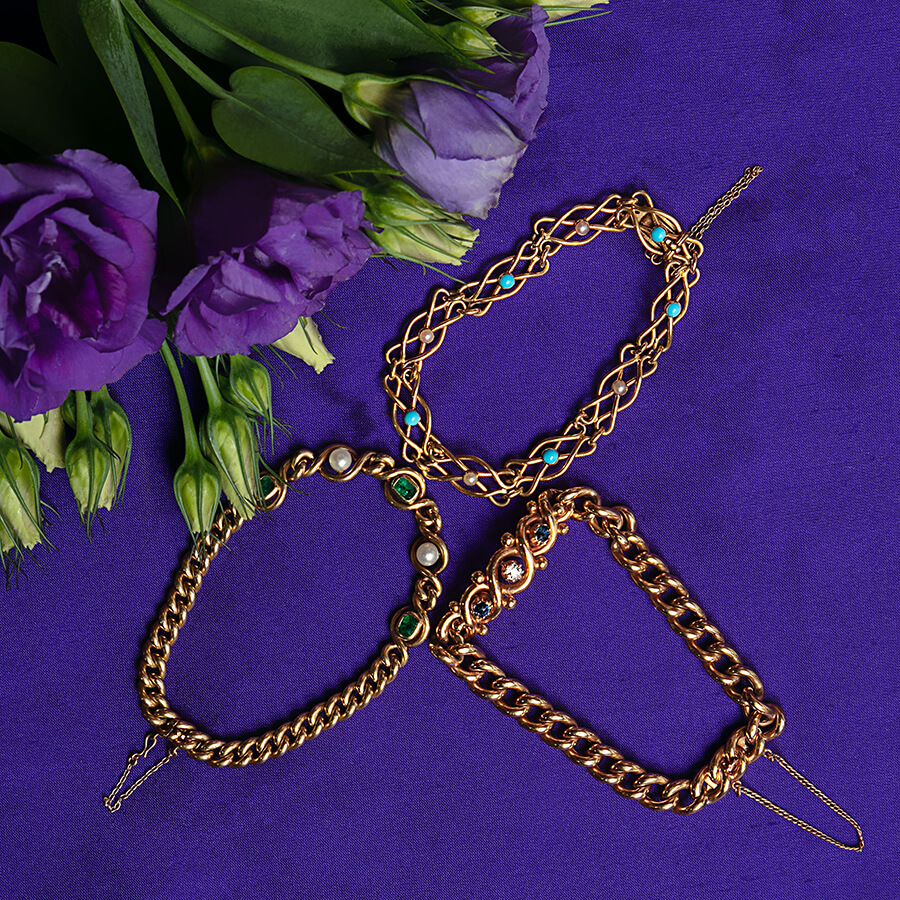
How to identify if jewellery is antique or vintage
Jewellery experts look for some of these key indicators when inspecting jewellery to help them identify when it was made to help them accurately classify them, and give them a valuation that is appropriate for their age, design and condition.
Hallmarks or other makers marks
The most accurate way to identify when and where the item of jewellery was made is to look for marking. Sometimes markings can even help you identify exactly who made it, as makers may have engraved initials or company logo onto the piece.
In Britain, design registration marks and hallmarks, such as marks from the assay office can not only help to authenticate the material and quality of the jewellery, but the date it was made too.
Specific eras or styles
Throughout history, certain design styles have been popular during specific periods of time. This means there are details or designs that can help to identify when a piece of jewellery was made.
For example, in the 1920s and 1930s ‘Art Deco’ was the style of the time. Key features of art deco design that you can look out for in vintage jewellery from this period include streamlined, geometric shapes and sometimes a nod to Egypt, inspired by the discovery of Tutunkahmun’s tomb in 1922.
Antique jewellery from the Victorian period often include natural motifs, like floral details or vines, or include snakes and serpent details, a popular symbol of love used in eternity rings inspired by a ring that Prince Albert gave Queen Victoria.
Researching popular design and jewellery styles of notable antique and vintage periods can help you to identify these when looking for heritage jewellery.
Period appropriate craftsmanship
Another way to identify when a piece of jewellery was created is to look for specific making techniques or materials that place it in a specific time period. For example, older pieces of jewellery would have been handmade and exhibit intricate details to reflect this, whereas vintage jewellery may have utilised contemporary machinery to the time to help manufacture and make jewellery.
The cut of diamonds, for example, can be a great way to identify when it was made. More traditional cuts, like the old mine cut, are likely to be antique, while modern cuts, like a round brilliant cut, are likely to be vintage instead.
Material matters
Similarly, material used in jewellery can help to identify when it was made. Higher-carat gold is likely to be used in antique jewellery, while platinum and white gold is often found in vintage jewellery.
When it comes to later vintage periods, like the 1960s onwards, plastic, or resin, and wood can be found used in fashionable jewellery of the time.
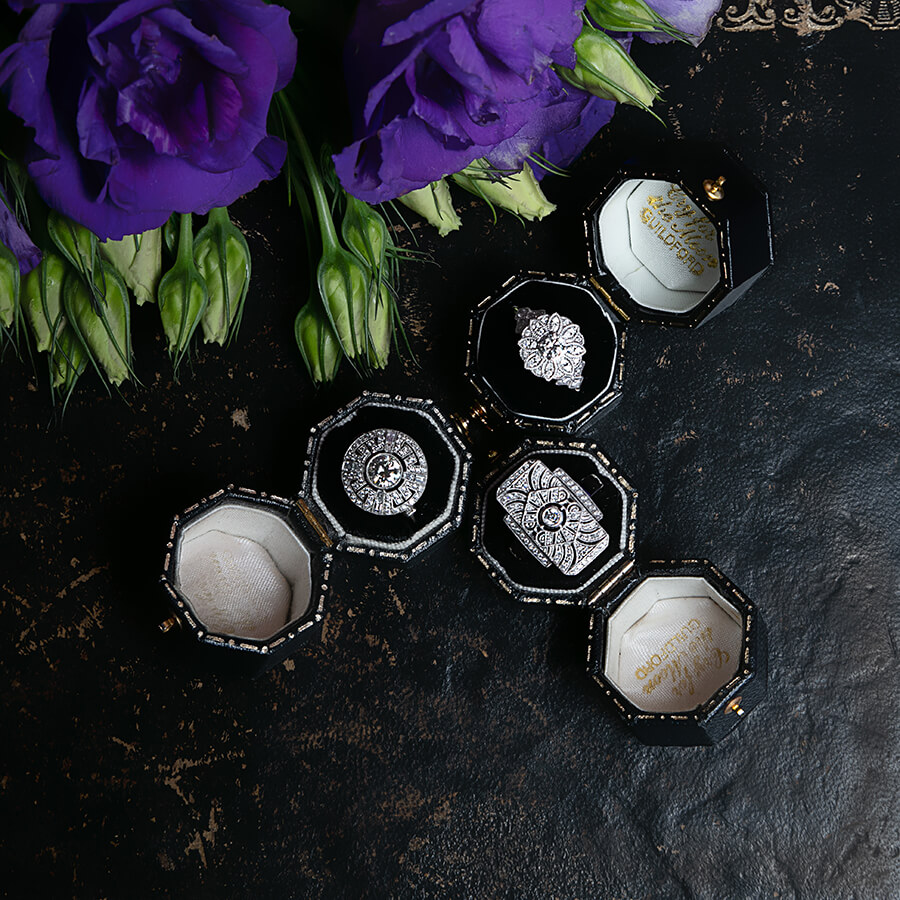
How to take care of antique or vintage jewellery
For jewellery you wear daily, such as an antique engagement ring, it’s a good idea to get into a regular cleaning routine to keep your jewellery maintained well and improve the life-span of heritage jewellery. Often it is easy to clean gold jewellery at home, with simple household items, but take care to be gentle with older pieces, as they may be more delicate than modern items.
Be sure to store antique and vintage jewellery in a dry place, and away from direct sunlight, and remove before showering, exercising or swimming. Try to avoid contact with chemicals, such as harsh cleaning products and even over exposure to perfumes, as this may cause damage in the long run.
Taking good care of antique and vintage jewellery will ensure that you can enjoy your jewellery for many years to come, and even pass them down as heirlooms of the future!
Restoring antique or vintage jewellery
Restoring antique or vintage jewellery is a great way to give historic, meaningful or symbolic heritage pieces a new lease of life. However, as a general rule, in order to maintain its status as vintage or antique, at least 50% of the original jewellery must remain in the restored piece.
This could mean keeping a gemstone but making improvements to the setting to ensure that it keeps its integrity but has a more robust setting. In contrast, using metal from antique or vintage pieces of jewellery, melting it down and redesigning it would mean it is no longer classed as either antique or vintage.
Final thoughts
When it comes to antique and vintage jewellery, the most important thing to consider is their condition and their value, not just financially but what it means historically, to you in the present, and who you might pass it down to eventually.
Investing in heritage heirlooms adds new stories to existing pieces of jewellery and keeps the rich tapestry of jewellery making and wearing alive for years to come.
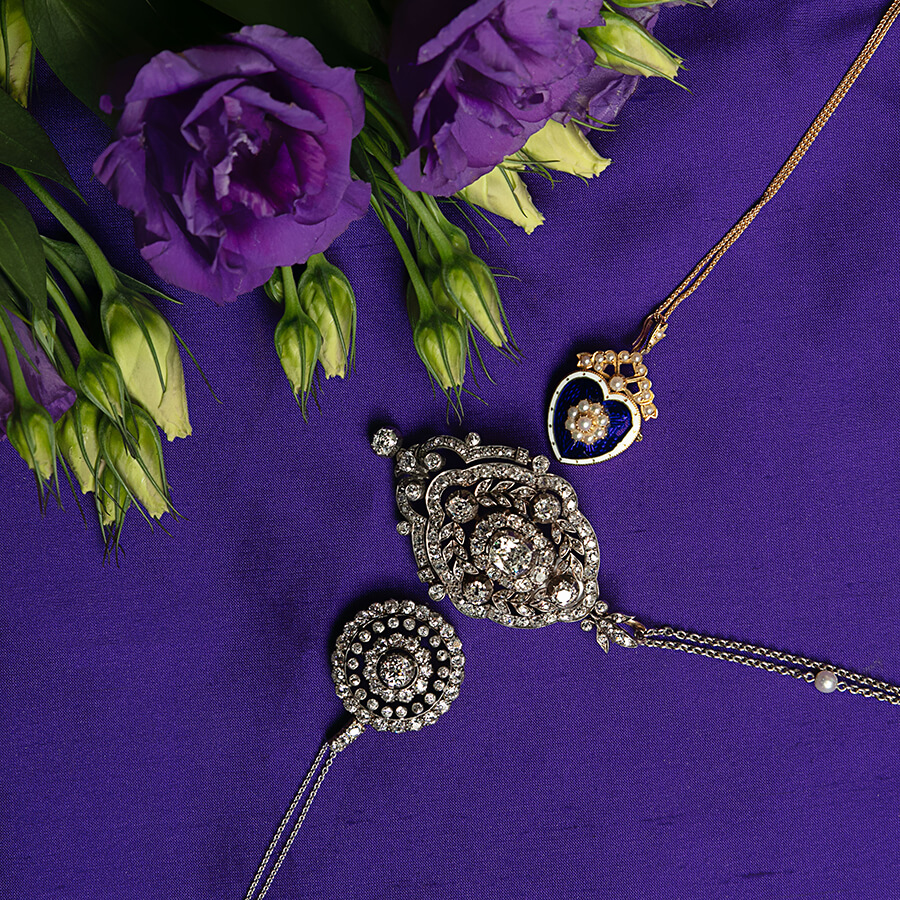
Need help identifying or choosing an antieur of vintage piece of jewellery?
Our experts can help to identify or value jewellery, source jewellery from a specific period, or discuss ways to restore or rejuvenate existing pieces, contact us.

